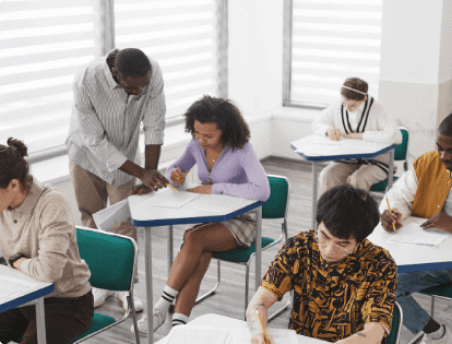Decolonizing Educational Institutions

As Canada continues to work towards reconciliation with Indigenous communities, the authors of this article invite non-Indigenous educators to engage with Indigenous pedagogies as a means to decolonize educational institutions. The purpose of this study was to highlight the value of Indigenous frameworks in effective teaching practices and methods. More specifically, this article focuses on […]
Social-Emotional Learning and Self-Advocacy for Students with Disabilities

This study seeks to understand how teachers’ knowledge of socio-emotional learning translates to students with disabilities’ empowerment and participation in school, and how the COVID-19 pandemic has affected it. Using SEL To Build Students Up A school-wide approach to social-emotional learning (SEL) is beneficial to improve outcomes for all students. Students with learning needs may […]
The Relationship Between Working Memory and Second Language Reading Comprehension
Cognitive Science, Pedagogy, Mind, Brain, and Education (MBE) The authors conducted a meta-analysis of 25 primary studies to further explore the link between working memory and reading. The inconsistency of working memory assessments Although working memory is important for reading, working memory assessments are too inconsistent to compare results. Written assessments yield greater information The […]
The Relationship Between Working Memory and Second Language Reading Comprehension
Cognitive Science, Pedagogy, Mind, Brain, and Education (MBE) The authors conducted a meta-analysis of 25 primary studies to further explore the link between working memory and reading. The inconsistency of working memory assessments Although working memory is important for reading, working memory assessments are too inconsistent to compare results. Written assessments yield greater information The […]
Implementing Personalized Learning in U.S. Schools
Personalized Learning, Professional Learning Educational innovators are beginning to explore the concept of personalized learning as a way to reimagine and redesign the United States education system. However, there is currently a lack of research surrounding this approach to teaching and learning. This study seeks to “offer strategic guidance for designers of personalized learning programs […]
Implementing Personalized Learning in U.S. Schools
Personalized Learning, Professional Learning Educational innovators are beginning to explore the concept of personalized learning as a way to reimagine and redesign the United States education system. However, there is currently a lack of research surrounding this approach to teaching and learning. This study seeks to “offer strategic guidance for designers of personalized learning programs […]
Language Skills of Youth Offenders
Interventions, Cultural Context, Law & Policy The study presents an analysis of the overall language skills of youth offenders involved in the juvenile justice system. This will help identify avenues that can increase the likelihood of successful interventions. Youth with language disorders have a higher chance of being involved in crime Developmental Language Disorders [DLD] […]
Finding the Other Half Of Me
Cultural Context, Inclusion, Pedagogy The uses of culture–based educational approaches in music education in Hawai’i have not been previously explored. Culture-based teaching leads to a greater sense of belonging When culture-based educational strategies are used, studies show relatedness to Native Hawaiian students’ greater sense of belonging and cultural affiliation, an application of cultural skills outside of school […]
Learner growth affected by frequent targeted one-to-one learning conversations
One-to-One Learning, Interventions, High Expectations This study investigated the impact of regular, structured, five-to-seven-minute, one-to-one conversations between a special educator and student, over a period of 6 years. This special education intervention prepares students for success in the post-secondary transition and includes cultivating learning habits in each student, such as self-direction, self-regulation, and self-awareness. The […]
Aligning Neurodiversity Innovation – by Joanna Brown
Joanna Brown Learning Letter The MARIO Framework After arriving at my current IB world school in Baku, Azerbaijan to serve as the whole-school learning support (LS) coordinator, I immediately realized how much exciting work there was to be done. The school had a rapidly expanding LS student population, many new team members, budding differentiation and […]
